Purchased for $2,000,000 in February of 2018, which was $200,000 under asking at the time, the 1,375-square-foot penthouse unit #601 atop The District at 2655 Bush Street has just returned to the market listed for $1,749,000.
Outfitted with Thermador and Bosch appliances in the kitchen, three bedrooms and two full baths, the corner unit features a wraparound balcony with panoramic views and parking for two cars in the building’s garage.
If you think you know the market for Lower Pacific Heights, a “most sought-after neighborhood with a 98 walk score,” miles from Mid-Market, now’s the time to tell.
Keep in mind that an “at asking” sale would represent a 12.6 percent drop in value for the penthouse versus the first quarter of 2018 while the widely misreported index for “San Francisco” condo values is “still up 6 percent!” over the same period of time. And for those running the numbers at home, the HOA dues for the unit are currently $1,025 a month.
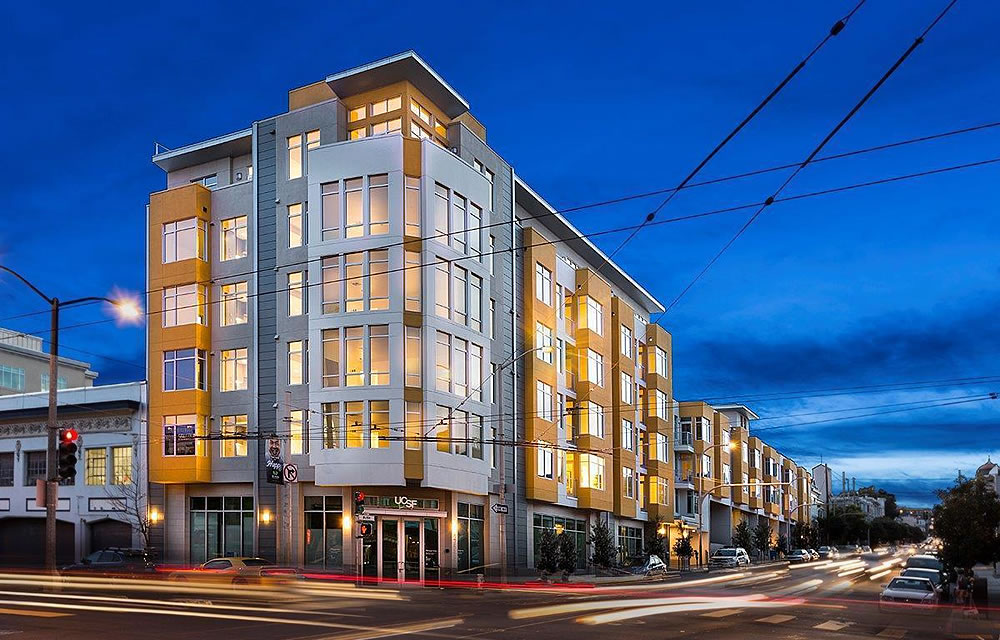
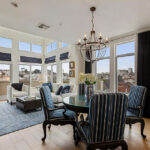
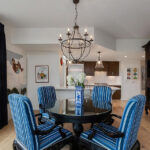
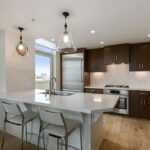


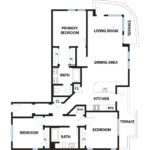
$1.55M
As the SF “doom loop” unfolds the future of residential real estate prices is problematic at best. Given the “collapse” of commercial real estate values. The latest – Swift is defaulting on the loan for 55 New Montgomery. An office building it rehabbed since purchasing in 2018 but sits devoid of tenants. There is the potential for a 50% decline in commercial real estate values which would lead to a big decline in residential values. It won’t be as sharp as with commercial RE but the specter of a big drop in home/condo values is out there. Because of this, buyers will be in the driver’s seat for a while to come and sellers will have to drop asking prices a lot, which this seller did, or see their listing sit unsold. My guess – this goes for 1.5 million.
I’m as fearful about the not-yet-done decline in office R.E. values … but there isn’t a direct correlation with a decline in residential values. The current residential decline seems driven much more by the Fed’s increase in interest rates; granted that’s an element of the commercial R.E. decline too, but it’s certainly possible that office occupancy could remain low for years but people would still want to live and work (from home) in San Francisco.
And let’s be clear; you might trumpet the decline of S.F. in every other post here, but an erosion of value in the City leads to an erosion of value around the entire Bay as well… There’s no schadenfreude to be had here by presumably-gleeful residents of the Peninsula or East Bay…
I think you left out the If. We are going to have to see whether or not “an erosion of value in The City” leads to a similar “…erosion of value around the entire Bay [Area]”, I don’t think you can assume it. That’s certainly a reasonably testable hypothesis, though.
Even if there is a historical strong correlation between a decline in S.F. residential values and a decline in residential values in San Mateo and Alameda Counties, I don’t think you can apply the results from previous market downturns to this one, but we are going to find out over the course of the next year or so.
No. More. “Luxury.” Condos.
How *dare* people build and buy things that I don’t like! And so close to multiple transit lines too!
(I mean, seriously … and on top of that, it’s a pretty big stretch to call something at Bush and Divisadero “luxury”… unless your idea of high class is looking at traffic and medical offices… If you think this is luxurious, I hope you don’t walk a half-dozen blocks up the hill to the monster SFH in true Pac Heights!)
My entire point escaped you. I thought that “Luxury” in quotes would be enough…
The kitchen may have high-end appliances, but those cabinets look pretty cheap.
A 1375 sq. ft. “penthouse” is using the term very loosely. I would put some value on being a block from El Burrito Express though.
Well, it’s a kinda dense building. There’s eighty (80) other residences, across only six floors. Of course, the listing agents don’t say how many other penthouse units there are in the building, if there are others. There’s a “sky deck with BBQ and fire pit” to contend with.
I assume the buyer gets to pay a “snob appeal” premium because there are no Below Market Rate (i.e., inclusionary housing) units in the building. That might appeal to a certain kind of buyer for this. The developer elected to pay an additional fee and the BMR homes are off-site. It’s not clear to me whether that decision and payment was made by one of the initial developers that flipped the project during and after entitlement or by KB Home when they acquired it.
I can tell you first hand most buyers don’t give a damn about BMR units in the building and I can’t see anyone finding “appeal” in a unit located in a building that doesn’t have them.
I agree. I have always lived in buildings with BMR’s and I found the people who lived in them to be: exactly like anyone else. Most people have no idea who the BMR residents are anyway. There is no snob appeal to not having BMR’s.
And yet developers keep on proposing to build with BMR units off site (or pay the in lieu fee instead). Wonder why that is if your observations are confirmable from already-completed developments. Why would that be?
Why would they continue to pursue their preferences if they are acting in rational self-interest and they know whether or not the presence of BMR units had a meaningful impact on sales prices? Seems like a reasonably testable hypothesis if one had a sizable data set from completed sales, which I assume that a home building firm would readily have access to.
My guess is that they’ve run the numbers and found it’s more cost-effective to build BMR units off-site or pay the fee in lieu of BMR units.
I seriously doubt it’s because they’re worried about how market-rate buyers feel about mingling with “the poors”.
And one reason that some developers might have for deeming it “more cost-effective to build BMR units off-site or pay the fee in lieu of BMR units” would be that there exists in the marketplace a premium for units in buildings without BMR units. Such a higher sales price per unit in a building without BMR units could in and of itself make omitting BMR units “more cost-effective” for a given project.
Another example of a building feature that would be in this category is the so-called “poor door”, or having the residents of below-market rate units enter the building through a separate entrance from market-rate residents. Presumably the developers of such buildings include such features because they have a business justification for it, whether or not the ultimate buyers can or will admit to be willing to pay more for not having to live in the same building as the mere middle class.
Brahma, you are apparently an expert in such things. How many people have you met who live in condo buildings who have expressed the snob appeal?
I have lived in condo buildings for the last 20 years and have never, not once, heard a single person expressing this sentiment.
@ Brahma “there exists in the marketplace a premium for units in buildings without BMR units”
– Yes, because the developer can sell 100% of the units at market rate.
SFRealist: I don’t claim to be an expert in such things, I am asking about why developers routinely take concrete actions to avoid actually building inclusive housing. Condo buyers who want to live in a building without inclusive units may not be willing to admit to that verbally (they might not even be conscious of it), but that preference will show up in the data (that I am assuming developers have, and act on).
Whether or not I or you or Fishchum personally know people who will admit to being willing to pay more for a unit in a building without BMR units is irrelevant to whether or not the phenomenon of social desirability bias occurs in the residential property market in S.F.
To have or not have BMR units is sometimes predicated on the how much the anticipated monthly HOA fees will be and whether a BMR buyer will be able to afford them. There is no HOA fee discount or subsidy provided by the program. BMR owners are also subject to the same future fee increases as market rate owners. The fees in this building are up there – $1,025 for unit 601 and $978 for unit 405 and $956 for unit 408.
I suspect they put BMRs in different buildings because of economics. For the sake of argument Location A has space for 20 units and is in a prime location fetching top dollar. To build 15 units they need 5 BMRs. So they could put 15 market rate units and 5 BMRs in Location A. Or, they could put 20 market rate units in Location A and 6 MBRs in Location B, which is a less desirable neighborhood so they will sell for less. Stick the BMRs in Location B and make more money selling the market rate units in Location A.
The in-lieu fee is $245/ft. (at the time it was $200)
They had something like 20 BMR units (would have 27 now maybe)
on a 1300ft unit the in-lieu fee would be $260k but they could sell the unit for $2M.
The 70% median area income price is currently $320k, the 130% median income price is $760k, for a 3 bed at the current 2022 rates (lower than this in 2018).
So…the developer could sell for $2m minus the $260K fee or sell for around $550k on average for the 20 units. And then of course the city can take the $200/ft price they got and go get $2000/ft pricing on an all affordable build, because they can get a good deal on building this way and maximize the amount of units build or something like that story.
I wouldn’t put Bosch and Thermador in the high-end range. Solid middle, yes. High end is Miele, Wolf-Subzero, and beyond (Gaggenau, La Cornue, AGA, etc.).
I live close to this. It looks like the unit sales were all geared toward the relocation, corporate rental, and short-term market. Where the building manager had offered some kind of service to that end, and a lot of the buyers were absentee investor type owners who were making much higher than rental market rate on them.
Then the pandemic happened, and they were trying to rent them as regular term leases, but asking WAY over market rate for them, and the building had a lot of vacancy.
It’s a pretty basic 3 bedroom apartment next to an auto body shop. Penthouse is a stretch. It’s a value-engineered six story building.
I’m curious to see what it sells for. To cover the mortgage and HOA, say, if you were renting this as a roommate situation, it’s got to be renting for $12k per month. $4k per person for 10×10′ rooms and shared bathroom.
Thanks for posting the background info. It would seem that the situation around Apt 405 would substantiate what you’re saying about the units in this building.
If a potential real estate genius bought Apt 405 at asking and financed with a fixed-rate mortgage at the average rate for a benchmark 30-year mortgage of 6.69 percent, the mortgage calculator at bankrate indicates that she’d be dealing with PITI of $7,625 plus HOA fees on that unit of $978, so just to cover the monthly expenses — forget about cash flow — $8,603 of rent would be required.
Could a potential investor actually get $8.6k of rent monthly for Apt 405?
The reason I am running the numbers for Apt 405 is because a newly remodeled 2 bd, 2 ba 1,259 ft.² unit with dedicated parking space is currently seeking a tenant at $4,995 per month, a 41.9 percent decrease from what would be required just to cover the PITI plus HOA for the similar Apt 405. Granted, that is a ground floor unit, and in most cases there’s going to be a premium for a higher floor, but a 72 percent premium for the fourth floor? And the ground floor unit is 8 percent larger in area.
I might be making some layman’s mistake, but I think there’s no point in “running the numbers” for Apt 601 as a rental property, unless you know that there is truly a huge premium for a penthouse unit, especially at today’s interest rates. I don’t think the penthouse will close in the next month and a half or so.
That seems so expensive. I guess a $5k two bedroom is not wildly above market.
Those units are so weird. It’s ground floor on a hill, so it’s really below ground, and only has windows on one side, and some of them are below grade with the sidewalk looking down into them. Though this one looks like the interior.
I guess a 2017 building gets a premium. But like this one a block away (a friend lives there) is the classic Edwardian flats, with views. And they’re not able to get $3700 for a two bedroom. There is high vacancy in the building, and the landlord has held out on rents. He’s finally starting to offer free months, and doing gut renovations on kitchens and bathrooms (though not in this one).
Parking around here is easily worth $350, maybe $400.
It’s hard to find a direct comparison. The going rate for two bedrooms around here seems to be around $1800 per room, but a lot of them are kind of grungy (or classic San Francisco) or smaller. 1200 square feet is pretty good size.
The newly remodeled 2 bd, 2 ba 1,259 ft.² ground floor unit I linked-to above that was offered for rent at $4,995 per month had it’s listing removed earlier this week. I have no way of knowing if they found an actual tenant, or gave up trying to rent it out.
The 2 bed, 2 bath 1,164 ft.² Apt 405 is still on the for-sale market, asking $1,299,999.
The main virtue of this place is its proximity to UCSF Mt Zion, which offers many excellent medical specialties, and is frequented by many people who walk downhill to see their doctors. When the smaller SF hospitals were seeking bigger institutions to protect them, Mt Zion was probably the cleverest by merging with UCSF. CPMC has been completely gobbled up by the behemoth “non-profit” Sutter.
This unit also has the advantage of a very good Philadelphia cheese steak store, a few tasty modest restaurants, and some other elements of its blue-collar history. However, by no stretch, then, now or in the foreseeable future, is this a luxury or “most sought after” residential neighborhood.
It is a short walk to both Fillmore Street and to the NoPa stretch of Divis which is quite popular.